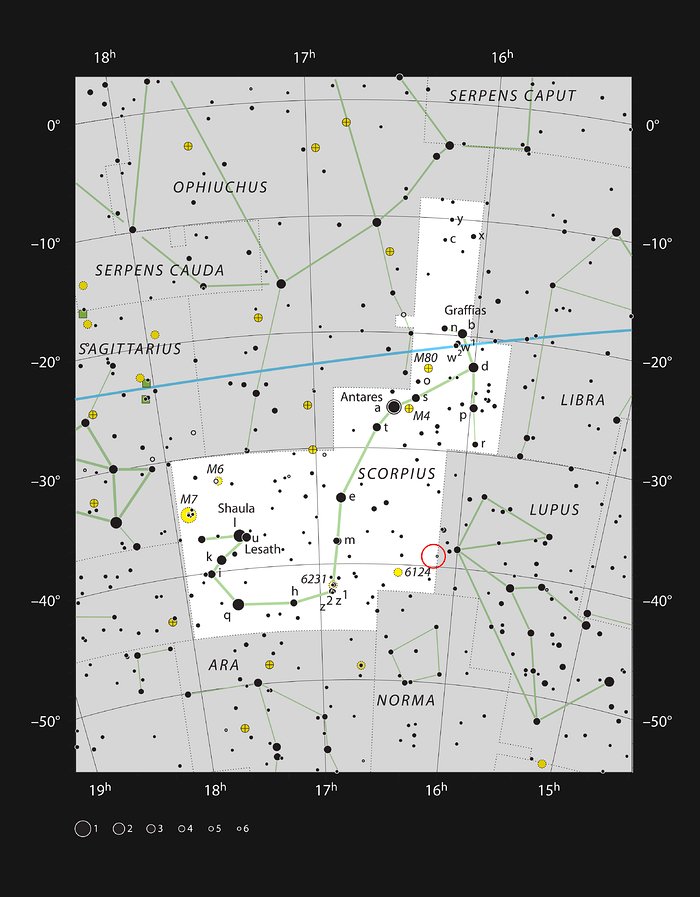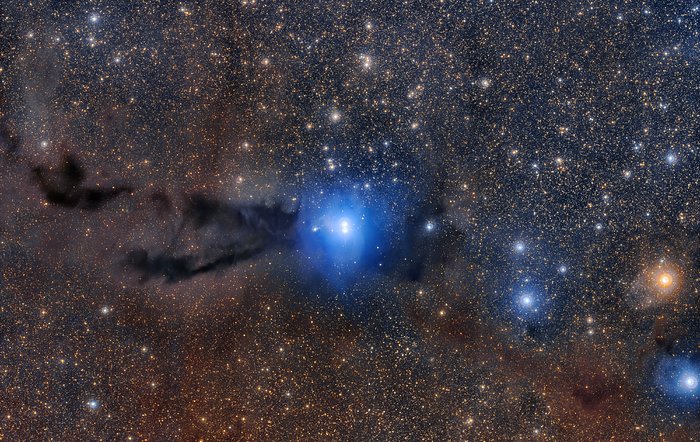There’s a celestial snake of smoke in scorpion territory
Around 600 light-years away, in the constellation of Scorpius, a serpentine region of smoke have been imaged, illuminated by the light of newly formed stars.

The cloud and newly formed hot young stars are marked with a red circle. (Photo credit: ESO, IAU and Sky & Telescope)
Known as Lupus 3, the cloud of smoke is in fact a dark nebula. These types of nebulae are the same any other nebulae, just with a denser amount of space dust.
Dark nebulae’s typically are so dense in dust that the light of the stars that form within them cannot penetrate the dark cloud. However, due to it’s snake like appearance protostars are able to shine through.This unusual shape is caused by the stars intense radiation and strong stellar winds that are have swept away surrounding gas and dust. It is believed that the Sun formed over four billion years ago in a nebula similar to that of Lupus 3.
This isn’t the first time lupus 3 has been studied, but these images have been described as the most detailed images of the region so far. Current images were taken using the VLT Survey Telescope and the MPG/ESO 2.2-metre telescope.
(Header photo credit: ESO/Digitized Sky Survey 2, Acknowledgement: Davide De Martin)
For more science and technology articles, pick up the latest copy of How It Works from all good retailers or from our website now. If you have a tablet or smartphone, you can also download the digital version onto your iOS or Android device. To make sure you never miss an issue of How It Works magazine, subscribe today!
Other articles you may like:





